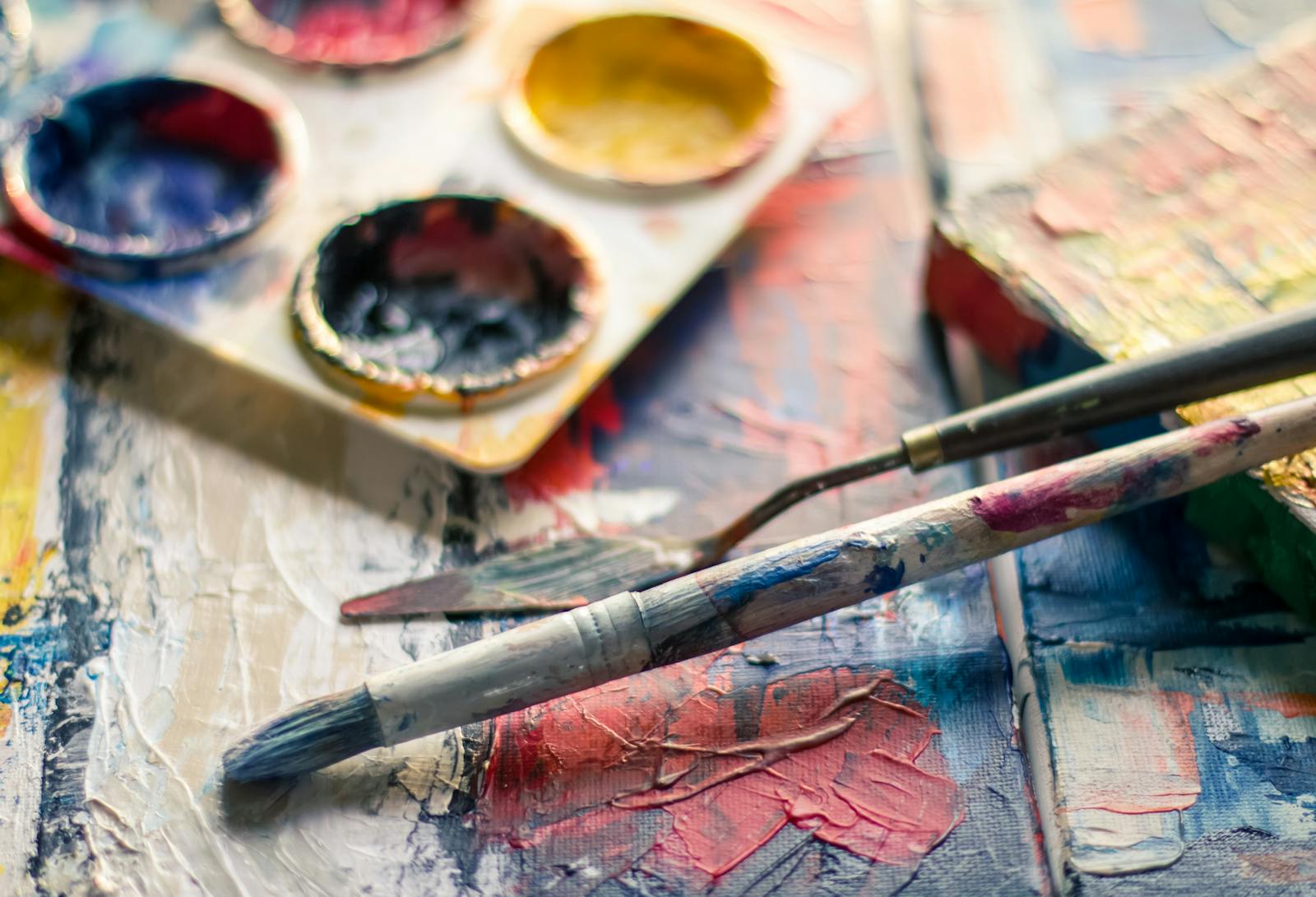They say there is nothing new under the sun. Anything that we feel or face has already happened to others. The way to acknowledge it is to have a look at the art pieces. People were in love and fighting for their values. Nations instinctively preserved the beauty of art to remain resilient. The immense variety of art lets us tell our stories in the most fitting form. So, we have enough reasons to delve into art and feel its healing properties on our well-being and soul. Let’s explore it!
Table of Contents
Art and the Eras
Art allows viewers to acknowledge their roles and themselves. Different philosophical visions relate to art through history. For example, Antiquity places humans’ strengths on a pedestal, while the Middle Ages sought salvation through theology and religion. Later, the Renaissance revived the idea of humans as the centre of the universe. The art expressions of these periods significantly differ, each serving the needs of its time.
Consider the greatest Leonardo da Vinci and Michelangelo—both artists depicted the human form in its physical and spiritual beauty. They praised the power and mind potential. Alongside this, science and critical thinking flourished.
People rely more on religion or magical practices in difficult times because they offer the required support. We want to find a connection to universal truths. We may ask ourselves different questions and chat here with good psychic readers.
Art as a Source for Empathy
Art holds power beyond aesthetics—it heals, connects, and endures. Through Art, creators have explored and captured human emotions. Due to innate empathy, we recognise all of them—from love to rage. We can express it too if we want. Let’s check it on the examples of fine art.
Frida Kahlo: Pain and Transformation through Art.
Frida Kahlo suffered severe physical injuries in a car accident. Her self-portraits reflect her pain, struggle, and strength. She used symbolism, bright colours, and traditional Mexican elements. Art became her way of transforming suffering into beauty and inner harmony.
Edvard Munch and The Scream
It is one of the most famous canvases depicting existential crises. The Norwegian artist Edvard Munch created The Scream as a human despair embodiment. It tells about the existential fears and isolation the artist himself experienced.
Arthur Soletskyi’s Great Little Dream
Ukrainian artist Arthur Soletskyi captures perseverance through hard times and respect for the past in Great Little Dream. Hollywood actress Sharon Stone, drawn to its depth, quietly acquired the painting for her private collection. The piece echoes Anatolii Bazylevych’s illustrations for Kotliarevskyi’s Eneida—another masterpiece of Ukrainian vernacular.
Banksy and his graffiti reaction to the World
Banksy is a worldwide-known British graffiti artist. He is famous for his protests against social issues. His real name is unknown. However, we recognise his provocative street artwork style. It brings satirical and critical messages, reflecting wars, poverty, and social injustice.
Spiritual Dimension of Art and Zodiac Signs
The yearning for the unknown is inherent in humans. Astrology encourages people to understand personality. It provides insights for relationships, through the compatibility test here, career, and creativity seasons. The latter affects human internal impulses and how they approach art.
Fire Signs – dynamic and emotional creators. Aries works impulsively and expressively (Van Gogh), Leo loves scale and drama (Andy Warhol), and Sagittarius draws inspiration from travel and philosophy.
Earth Signs – possess attention to detail. Taurus creates aesthetically refined works (Dali), Virgo values precision (Leonardo da Vinci), and Capricorn tends to restrained styles.
Air Signs – innovation and intellect. Gemini experiments across genres (Fellini), Libra seeks harmony, and Aquarius breaks standards (Picasso).
Water Signs – emotional depth. Cancer delves into nostalgia and symbolism (Frida Kahlo), Scorpio explores dark themes (Francis Bacon), and Pisces is dreamy and intuitive (William Blake).
How to Start Living Your Emotions Through Arts
Every creator can experience therapeutic moments through Art: proper breathing while singing, decoding emotions through music, or carving to feel the materiality and volume. So, pick the activity you love the most and turn it into your hobby.
Find Your Expression
Devote some of your time to try different things. It may be drawing, writing, or playing music. Remember there is no “right” or “wrong” as you should follow your feelings and inclinations. The most essential thing is to add anything to your routine that helps you cope with daily struggles. It could be a great alternative to watching TV.
Add Symbols That Hold Value for You
Artists use symbols and archetypes. Some have already become cliche, while others are infinite. They help to tell complex ideas. For example, the worldwide known story of two lovers, the archetype, Romeo and Juliette, just needs a hint on a painting to be recognised. Play with it so it adds depth to your canvas.
Also, simple tricks work, too. For instance, light can symbolise knowledge, while shadow usually goes for the subconscious. It gives viewers the space to interpret works on a deeper level and discover their meanings.
Don’t Be Afraid to Experiment
Although they say we should learn the basics first and then break the rules, it does not always work this way. Freedom is what makes the art beautiful. If you feel better with a tutor that guides you, do it. On the contrary, if you feel like going your way and experimenting, do it. What you should chase is the creative process you like. It releases tension and expresses hidden emotions.
Keep an Art Journal
Record or sketch your emotions daily. Drawing or writing helps track your feelings and better understand your state of mind. It also provides a chance to analyse mood changes and find ways to cope with difficult moments.
Use Art for Meditation
Art is a part of mindfulness. When creating, you can find the reason to be here and now. When the routine overwhelms you, shifting focus on colours, details, and shapes calms the mind.
Share Your Works
Your art is supposed to be shared, but do not be afraid or pushed to do it if you do not want to. Just remember, some people would love to see it and share your emotions. There is no need to be a professional artist to have the right to share your creations. The point is to make your life more pleasant with a like-minded community and receive support.
Conclusion
Art is more than just about beauty; it is also about healing. It offers a way to live through emotions, understand oneself, and find harmony with the world. This trait is nothing new. Everyone can create – the key is finding your path. Through art, we find meaning, understanding, and inspiration. It deepens and enriches our lives. Good luck!
Disclosure Sponsored Links: This post contains a paid-for sponsored link, meaning we have received compensation in exchange for including it. Sponsorship does not influence our content, but we believe in transparency regarding paid placements.








